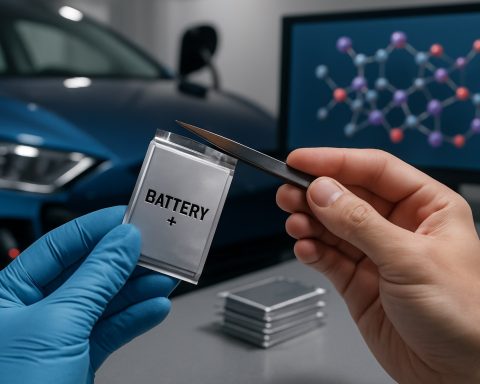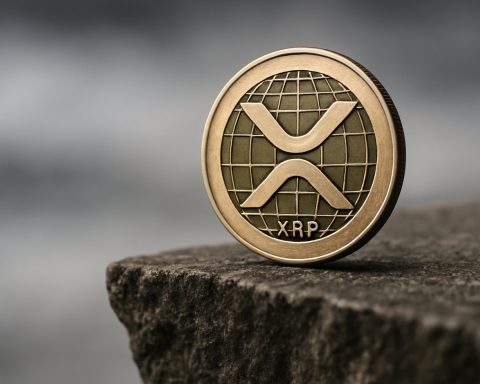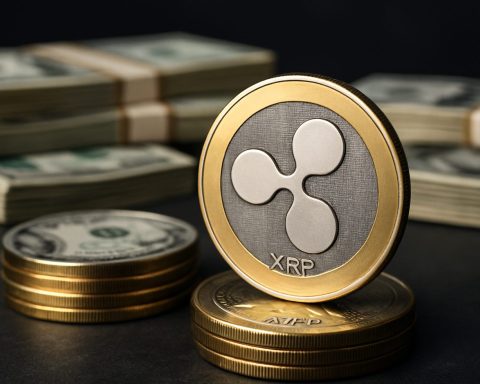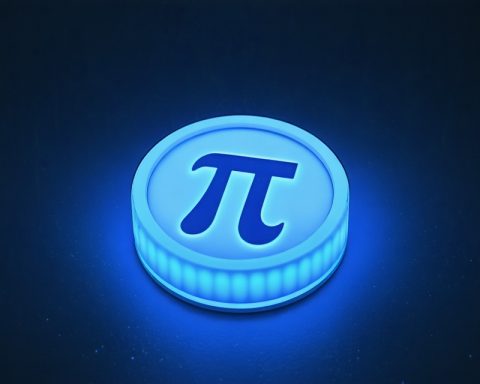- Iron-sodium batteries are emerging as a cost-efficient and long-duration alternative to lithium-ion batteries, extending energy storage beyond the typical four-hour duration.
- US startup Inlyte, in collaboration with Swiss manufacturer HORIEN, has developed an iron-sodium battery offering up to 7,000 cycles or a 20-year lifespan.
- Inlyte’s acquisition of Beta Research allows for increased manufacturing capacity and the launch of optimized pilot projects, with plans for a US factory by 2027.
- Tesla’s Megapack, bolstered by the new Shanghai Megafactory, continues to lead in large-scale energy storage solutions, powering initiatives in China.
- The race between Inlyte and Tesla highlights the pivotal role of innovative energy solutions in achieving a sustainable, cleaner environment.
In a world where energy transition is at the forefront of environmental and economic discussions, the race to innovate in battery technology has never been more fierce. Leading the charge in this battle of electrons is a formidable new contender poised to disrupt the status quo: the iron-sodium battery. This remarkable development promises not only to challenge the reign of Tesla’s Megapack in the arena of large-scale energy storage but also to redefine the limits of cost and efficiency.
Visualize an expansive landscape of renewable energy technologies, where lithium-ion batteries have been the undoubted champions, powering everything from electric vehicles to enormous grid-stabilizing systems. Despite their prowess, there lies a persistent demand for storage solutions that extend beyond the typical four-hour duration. As energy planners dream of diurnal systems that can sustain over ten hours, iron-sodium batteries have answered the call with a robust offering that holds the potential for both mid-range and long-duration storage solutions.
A pioneering force behind this innovation, US-based startup Inlyte, has unveiled an iron-sodium battery that boasts an extraordinary aptitude for longevity and efficiency. In a symbiotic collaboration with Swiss manufacturer HORIEN Salt Battery Solutions, the firm is accelerating the production of this new technology, aiming for mass deployment across global markets. The battery’s durability promises over 7,000 cycles or a lifespan of 20 years, rivaling current sodium nickel chloride iterations but at a substantially reduced cost.
Moreover, the road to realization is paved by Inlyte’s strategic acquisition of Beta Research, a UK company specializing in sodium metal halide batteries. This acquisition not only amplifies Inlyte’s manufacturing capacity but also serves as a launchpad for optimized pilot projects. By 2027, the company aspires to inaugurate its first US factory, a venture that promises to align synergistically with federal energy policies aimed at a sustainable future.
Simultaneously mapping the evolution of this technology is Tesla, whose energy storage products—spearheaded by the Megapack—have significantly scaled up production capabilities with the inauguration of the Shanghai Megafactory. Symbolic of a burgeoning market in China, the Megafacility signifies Tesla’s commitment to its dual identity as a car manufacturer and an energy solutions provider, with each Megapack harnessing enough power to energize 62 Model 3 vehicles.
As these two titans of technology—to wit, Inlyte with innovation and Tesla with established prowess— race toward the horizon of renewable energy, the true victors in this contest will not just be these companies but the environment they seek to protect. The unfolding scenario paints a vivid picture of a future where cleaner, longer-lasting energy storage paves the way for a more sustainable planet. The key takeaway is clear: as innovation extends its reach, the promise of a greener future inches ever closer, proving once again that in the world of energy, nothing is set in stone.
Unveiling the Future of Energy Storage: Iron-Sodium Batteries Poised to Transform the Industry
Introduction
The burgeoning field of battery technology plays a pivotal role in the global energy transition. Recently, a promising new contender—the iron-sodium battery—emerged to challenge the dominance of lithium-ion batteries. This novel technology offers superior longevity, cost-effectiveness, and the potential to revolutionize large-scale energy storage. Below, we delve into the various aspects of iron-sodium batteries, comparing them with existing technologies, outlining their benefits and limitations, and forecasting their potential impact on the market.
Features and Specifications
Iron-sodium batteries, developed by US-based startup Inlyte in collaboration with HORIEN Salt Battery Solutions, are crafted to deliver enhanced longevity and efficiency. Key specifications include:
– Lifespan: Over 7,000 cycles or approximately 20 years.
– Cost: Considered to be substantially lower than current sodium nickel chloride batteries.
– Capacity: Suitable for both mid-range and long-duration storage solutions.
– Environmental Impact: Made from more abundant and less toxic materials compared to lithium-ion counterparts.
Pros and Cons Overview
Pros:
– Durable and Long-lasting: With an impressive lifespan, these batteries are ideal for applications requiring sustained energy storage beyond the typical four-hour duration.
– Cost-effective: Potentially more affordable than existing technologies, thereby broadening their accessibility.
– Sustainability: Utilize abundantly available materials, supporting a lower environmental footprint.
Cons:
– Development Stage: Still in the pilot project phase, requiring further testing and optimization.
– Manufacturing Scalability: Although plans for expansion exist, mass production and global deployment are yet to be fully realized.
Iron-Sodium vs. Lithium-Ion and Other Technologies
– Energy Density: While lithium-ion batteries excel in high energy density, iron-sodium batteries contribute to longer-lasting energy solutions, catering to different needs in the energy landscape.
– Maintenance and Safety: As iron-sodium batteries are anticipated to be more maintenance-friendly and safer due to their chemical characteristics, they could appeal significantly to utility-scale deployments where these factors are critical.
How-To Steps & Life Hacks
For businesses and individuals eager to explore iron-sodium batteries, here’s how you can get started:
1. Research Compatible Devices: Investigate which energy storage solutions can be adapted to incorporate iron-sodium batteries.
2. Budget Planning: Consider the potential cost savings due to longer lifespan and lower maintenance costs.
3. Pilot Programs: Engage with demonstration projects to assess real-world performance.
4. Vendor Collaboration: Partner with manufacturers like Inlyte for tailored energy solutions.
Insights & Predictions
As renewable energy production continues to rise, the demand for effective storage solutions will increase. Iron-sodium batteries are positioned as a sustainable alternative with realistic expectations for significant market growth.
– Market Forecast: By 2027, with the establishment of a dedicated factory in the US, iron-sodium batteries may capture a significant share of the energy storage market, supported by federal policies.
– Environmental Impact: If deployed on a large scale, these batteries can contribute to reducing global greenhouse gas emissions and dependency on finite resources.
Actionable Recommendations
1. Stay Informed: Regularly monitor emerging technologies in the energy sector for advancements in iron-sodium battery development.
2. Evaluate Needs: Assess your energy storage requirements to determine if longer-duration batteries align with your goals.
3. Engage Strategically: Consider partnerships with pioneering companies, such as Inlyte, to leverage new technology as it becomes available.
For further insights into advancing energy storage technologies and market trends, visit Inlyte and Tesla.
By embracing innovative solutions like iron-sodium batteries, we can collectively contribute to a more sustainable and cleaner energy future.









